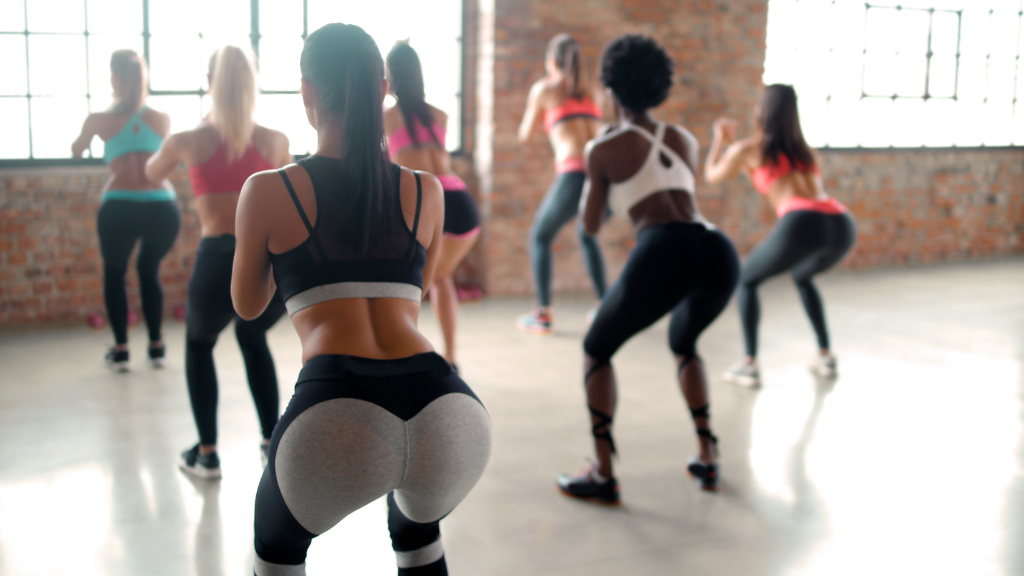Glute training is a crucial aspect of overall health and fitness. Strong and toned glutes not only improve the appearance of the lower body but also play a vital role in everyday movements and exercise. In this article, we’ll explore the scientific principles behind glute training, including the anatomy and function of the glutes, muscle fiber types, progressive overload, and glute training techniques and exercises. We’ll also discuss the role of nutrition and recovery in maximizing glute gains.
Anatomy and Function of the Glutes
The glutes are composed of three main muscles: the gluteus maximus, gluteus medius, and gluteus minimus. The gluteus maximus is the largest muscle in the body and plays a crucial role in hip extension and external rotation. The gluteus medius and minimus are responsible for hip abduction and stabilization. Strong glutes can improve posture, balance, and overall lower body strength.
Muscle Fiber Types and Glute Training
The glutes contain both fast-twitch and slow-twitch muscle fibers. Fast-twitch fibers are responsible for explosive movements such as jumping and sprinting, while slow-twitch fibers are used for endurance activities such as running long distances. To effectively target all muscle fibers in the glutes, it’s important to vary training methods, including exercises that focus on both explosive power and endurance.
Progressive Overload and Glute Training
Progressive overload is the gradual increase in resistance or difficulty of exercises over time. This principle is essential for building muscle and making gains. To maximize glute gains, it’s important to progressively increase the resistance or difficulty of exercises, such as squats or lunges, over time.
Glute Training Techniques and Exercises
There are many different techniques and exercises that can be used to train the glutes, including:
- compound exercises,
- isolation exercises,
- plyometric exercises.
Compound glute exercises target multiple muscle groups. Examples of compound glute exercises are:
- Back Squats
- Deadlifts
- Leg Presses
- Bulgarian Split Squats
- Lunges
- Step Ups
- Curtsey Squats
- Barbell Romanian Deadlifts – RDLs
- Cable Pull Throughs
- Barbell Hip Thrusts
- Frog Kicks
- Sled Pushes
Glute isolation exercises focus specifically on the glutes. In this group we have:
- Banded fire hydrants
- Cable glute kickbacks
- Banded glute kickbacks
- Lateral band walks
- Hip thrusts
- Glute bridges
- Kas glute bridges
- Smith machine hip thrusts
- Single-leg glute bridges
- Donkey kick
- Side-lying hip abduction
- Rainbow kickbacks
Plyometric glute exercises can improve explosive power. Examples of plyometric glute exercises are:
- Jump squats
- Box jumps
Incorporating a variety of exercises into a well-rounded training program can help maximize glute gains.
Nutrition and Glute Training
Nutrition plays a crucial role in glute training and muscle growth. Consuming enough protein is essential for muscle repair and growth, while carbohydrates provide the energy needed to fuel intense workouts. Healthy fats also play a role in muscle growth and overall health. Additionally, staying hydrated is crucial for muscle recovery and overall health.
Recovery and Glute Training
Proper recovery and rest are essential for muscle growth and injury prevention. Stretching and foam rolling can help relieve muscle soreness and prevent injury. Rest days are also crucial for allowing muscles to repair and recover. Balancing training and recovery is key to maximizing glute gains.
Conclusion
Incorporating glute training into a well-rounded fitness routine is essential for overall health and fitness. Understanding the scientific principles behind glute training, including anatomy and function, muscle fiber types, progressive overload, and recovery, can help maximize gains and prevent injury. By incorporating a variety of exercises, proper nutrition, and recovery techniques, anyone can achieve strong, toned glutes and a healthier overall body.
